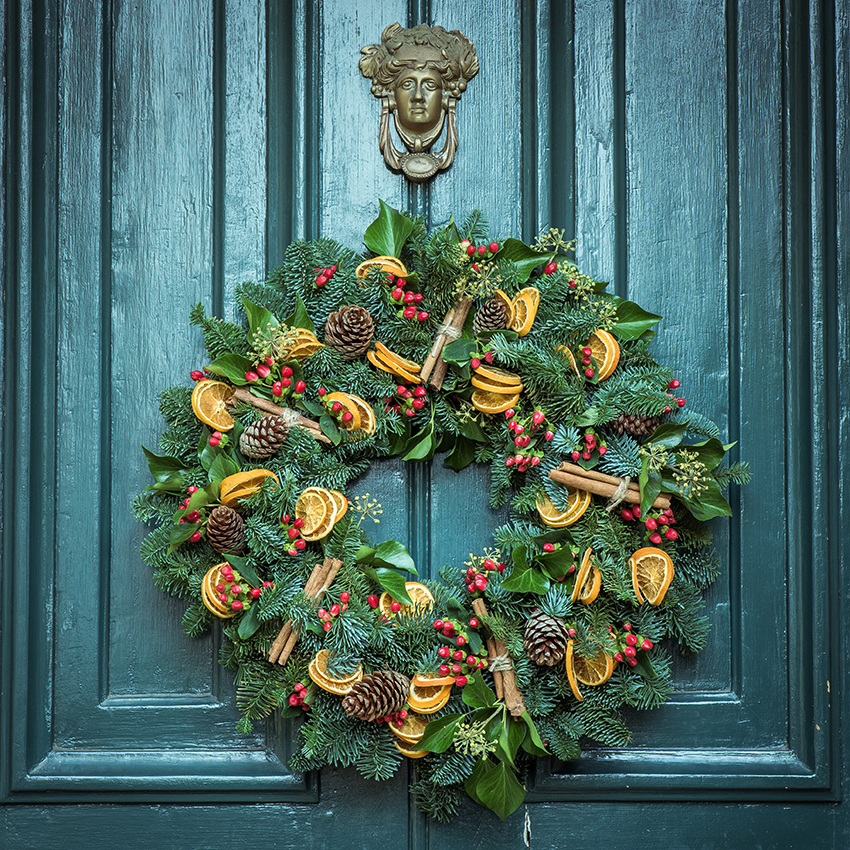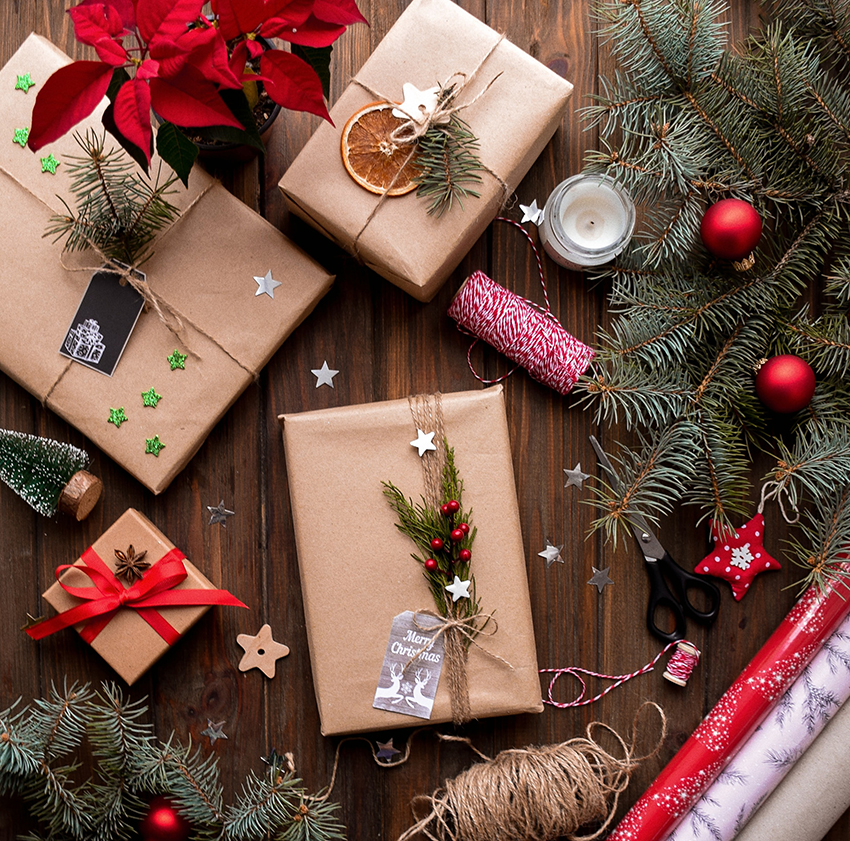We all want to do our bit to help the planet and reduce our impact on the environment but we get to Christmas and it can easily all go out of the window!
So here’s a handy guide to having a sustainable Christmas. It can be really easy to have a sustainable Christmas, it just involves a little bit of planning and thought. And remember, you don’t have to be perfect, if you just make one of the changes below that is a huge change and is still loads better than not doing any of them.

Christmas Tree
So is a real or fake Christmas better for the environment? It’s not as easy as saying one is better than the other.
A real tree absorbs carbon from the air and an artificial tree uses oil to make and contributes to carbon impact in its production. A real tree uses natural resources to grow and an artificial tree uses natural resources to be made. A real tree is disposed of after Christmas resulting in carbon impact in the processing of it but an artificial tree can be used year after year. Real trees can be bought potted and used year after year and an artificial tree can have a lower carbon footprint than a new real tree every year if reused for 7 years or more* – my childhood Christmas tree lasted 20 years before metal fatigue saw it end its days. It was a sad day!
So which ever you choose, make sure you choose a tree you can use for many years to come to make it as sustainable as possible.
*according to the Carbon Trust. Obviously this depends on the size of the tree but between 7-20 years is when most fake trees have a lower impact than having 7-20 real trees.

Lights
We all love a pretty fairly light or two for Christmas but how environmentally and sustainable are they?
Again we need to remember they are made of plastic which uses a fossil fuel to make and has a carbon impact in the manufacturing process.
To make sure your lights are as sustainable as possible go for good quality LED lights. LED use a minimal amount of electricity so the carbon impact of use is reduced – and if you use 100% renewable/clean electricity that impact is even lower. Good quality lights will also last a lot longer, keeping them out of landfill.
Many people this year are turning to battery lights to reduce their electricity bill with energy prices so high but remember what happens to batteries after they have been drained. Many will be recycled (resulting in a carbon impact) but many still end up in landfill even though they should never be placed in with household waste. Rechargeable batteries could be a better option but they do use electricity to charge them and battery operated lights tend not to be as well made as mains operated lights meaning they end up in landfill sooner. So I would always recommend quality LED fairly lights over anything else.

Decorations
Go into any pound shop and the place is awash with shiny plastic decorations which are often thrown away after Christmas – garlands, hanging stars etc.
Again, if you must buy plastic decorations, go for quality products that will last for many years, lowering their carbon impact and keeping them out of landfill.
Alternatives though are natural or compostable decorations. Paper garlands, stars, string of popcorn, paper or glass baubles etc. are all beautiful, festive and much more sustainable and if you can upcycle old decoration or Christmas cards, even better!
Drying oranges and creating natural wreaths and decoration with real holly and ivy can also not only look fabulous, they smell fabulous and can be composted after Christmas – fabulous!

Presents
Think carefully when you buy presents and make sure you’re not just buying things for the sake of it.
Buying thoughtful, long lasting ethically made presents not only benefit the recipient but they also benefit the environment as they won’t end up in landfill and have a lower carbon impact.
Remember there is only so much “stuff” people actually need, so shopping sustainably isn’t just about what they’re made of or the carbon impact of the manufacture, it’s about not suffocating the planet with more and more “stuff”.
Great sustainable presents can be charity subscriptions, bales of hay for animal sanctuaries (don’t worry you don’t have to actually buy and send hay, just donate on your recipients behalf), planted trees or garden or house plants that help with carbon absorption as well as your recipients wellbeing.
Really think about your presents, especially for those you know already have everything they need. Maybe you can use their present to help someone in need – food bank donation, charity donation etc.

Cards and Wrapping Paper
I’m rubbish at sending cards, I always forget, which is even more embarrassing when you know I worked for many years as a designer for a greetings card publisher! Some years I’ve got as far as writing and addressing them before forgetting to send them so I’ve given up trying now as it’s just a waste.
So if you are any good at buying and sending cards, make sure they are produced using FSC accredited or recycled card stock and can be easily recycled after Christmas – that means no 3D cards with sticky pads, no glitter and no shiny metallic foiling. Charity cards are obviously the best as you’re also helping a good cause at the same time.
With regards to wrapping paper, the same applies as cards regarding the paper stock and being easily recycled. Also think about all the other stuff we put on presents too – Sellotape, gift tags, ribbons etc. Opt for natural embellishments like pine cones, holly and dried fruit slices and natural string or paper ribbon which can be composted or recycled after the big day.
I like to keep my old Christmas cards and use them the next year as gift tags like I did as a kid!
And lastly I would suggest at just not using sellotape (other plastic based sticky tape is available). These days paper tape is widely available and far better for the planet as no oil in production and can be easily recycled or composted after the presents have been opened. Obviously if you’re using string or ribbon you really don’t need any sticky tape anyway!

Food & Drink
The tendency is to overindulge over Christmas which not only has a big impact on our waistlines but it also has a big impact on the planet too. The easiest way to reduce the environmental impact of our food and drink over Christmas, and all year round, is to eat a plant based, vegan diet.
A vegan diet can save 4.3kgs of carbon per day based on a standard meat eating diet but this could be an even higher number over Christmas when our food and drink consumption can increase.
Along with the environmental impact a vegan diet obviously reduces animal cruelty and abuse too so it’s a win win.
If you need any delicious vegan christmas recipes just ask, I have loads!
Also regarding food, please remember that not everyone has all the food they need to survive at any time of the year so Christmas is a great time to add something to the food bank box in the supermarket or to donate a sum of money to the foodbank or to a homelessness charity. Any amount of food or money is always a help and always very much appreciated by the charities and the recipients of the help.
Remember, any change has a positive impact however small it may seem to you.
Have a fabulous, sustainable Christmas!

